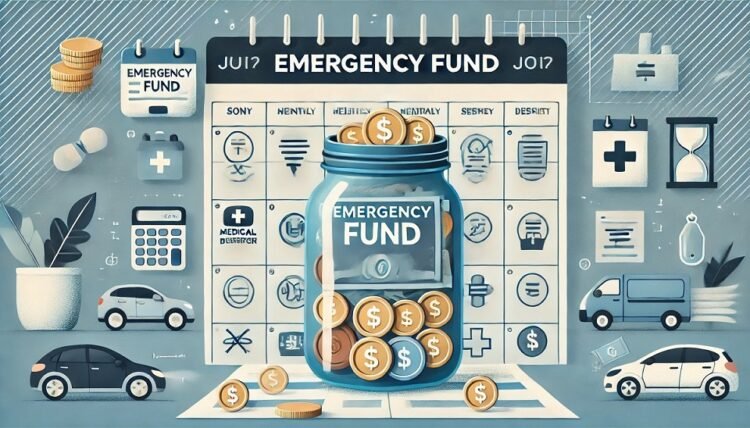Life has a funny way of throwing surprises at us, often when we’re least prepared. Whether it’s an unforeseen medical expense, an unexpected job loss, or a sudden home repair, financial shocks can be quite overwhelming. This is where an emergency fund comes to the rescue, acting as your financial safety net for those unexpected twists in life.
How Much Should Your Emergency Fund Be?
The ideal amount to keep in your emergency fund depends on several factors, including your age and monthly expenses. As a general guideline, it’s advisable to have enough stashed away to cover your living expenses for six to nine months. Let’s break it down with a practical example.
If your monthly income amounts to Rs 60,000, and your monthly expenses tally up to ₹40,000, your emergency fund target should ideally fall between Rs 2,40,000 to Rs 3,60,000 (simply multiply your monthly expenses by six or nine).
However, remember to include essential payments like EMIs and insurance premiums when calculating your monthly expenses. While this figure may appear daunting, particularly if you’re starting from scratch, the most crucial step is to begin setting aside money regularly.
How to Determine Your Emergency Fund Size?
To determine how much you should put into your emergency fund, you’ll need to calculate your baseline, and necessary expenses. Here’s a step-by-step guide on how to do it:
Step 1
Go through your bank account and credit card statements, reviewing several months of spending.
Step 2
Tally up your spending on essentials only, such as:
- Rent or mortgage payments
- Utility bills
- Basic groceries and toiletries
- Childcare costs
- Transportation expenses (gas, bus fare, etc.)
- Healthcare and medical bills
- Pet-related expenses and veterinary bills
- Minimum monthly payments for loans and credit cards
Step 3
Look back over at least three months to get an accurate average for each expense.
Step 4
Add up the expenses for those months and divide by the number of months you reviewed to find your average monthly spending on essentials.
Step 5
Multiply your average monthly essential spending by the number of months you want to cover with your emergency fund.
How to Build Your Emergency Fund?
Building your emergency fund is a vital step in securing your financial future. Since these funds need to be invested in low-risk instruments, you have several options to consider:
Savings Account
Your regular bank savings account can serve as your emergency fund repository, but it demands discipline to prevent withdrawals for non-emergencies. Some individuals prefer a dedicated savings account solely for their emergency fund.
Recurring Deposits (RD)
RDs can offer slightly higher returns, usually ranging from 4% to 8% per annum. However, be cautious of potential penalties if you withdraw your RD investments prematurely, as this can reduce your overall returns. Keep in mind that the interest earned from your bank Recurring Deposits (RDs) is subject to taxation, and the amount of tax you’ll owe depends on your income tax bracket. Research and select a bank offering the best interest rates for Recurring Deposit (RDs) to optimize your investment.
Fixed Deposits (FD)
You can either create a new FD as your emergency fund or invest a lump sum. FDs may offer better returns but remember that they come with taxable returns and might have penalties for breaking them prematurely.
Liquid Funds
These are an excellent choice for your emergency fund. Liquid funds primarily invest in bonds with short maturities, making them low-risk with better returns than a standard savings account. Gains from liquid funds, if held for over three years, are taxed at 20% post-indexation, which can reduce your tax liability.
Ultra Short-Duration Funds
These funds offer comparable returns to bank fixed deposits, but they come with potential tax advantages. If you hold these funds for over three years, you’ll be taxed at a lower rate, as explained earlier. These funds are highly liquid, ensuring you can access your funds without penalties in the event of an emergency. You can gradually build your emergency corpus through a monthly systematic investment plan (SIP). However, do keep in mind that returns from these funds aren’t guaranteed like those from FDs.
Closing Thoughts
In a world where the unexpected is the only certainty, having an emergency fund provides not just financial security but peace of mind. It’s your shield against life’s unpredictable surprises. So, don’t wait. Start building your financial safety net today.























